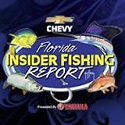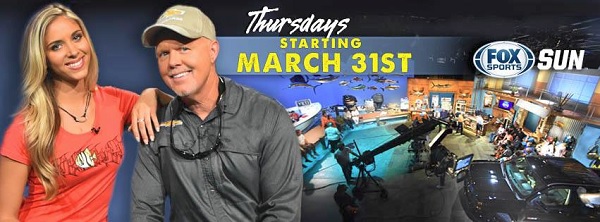 Cobia are a fish that look like a shark and pull like a Chevy truck. The first week of April is about in the middle of the cobia season in my region, so my recommendation is to go out and hit some of the reefs and wrecks in the 50 to 90 foot depths early in the day. Fish those areas with jigs and live baits, and be ready for any cobia that might appear when you first pull up to the structure.It’s pretty common to see cobia when you first get on a reef or wreck, and then never see the fish again, so be prepared by rigging up before you get in the boat.
Cobia are a fish that look like a shark and pull like a Chevy truck. The first week of April is about in the middle of the cobia season in my region, so my recommendation is to go out and hit some of the reefs and wrecks in the 50 to 90 foot depths early in the day. Fish those areas with jigs and live baits, and be ready for any cobia that might appear when you first pull up to the structure.It’s pretty common to see cobia when you first get on a reef or wreck, and then never see the fish again, so be prepared by rigging up before you get in the boat.
For baits, menhaden, sardines and pinfish are the most commonly used baits, but crabs, shrimp and even a whole frozen squid will work on cobia. For jigs, you’ll want to fish a 2 to 5 ounce jig in chartreuse, white, yellow and even black. Black is a great color, so I like to put one black jig on and one lighter colored jig and see what the fish prefer. You can also tip those jigs with a plastic Glow worm, whole shrimp, strip of cut bait or whole squid.
Most of the time you’re targeting the cobia on the reefs and wrecks you’re after fish that are down deep either alongside or over the top of the wrecks, so you need to have enough weight to get down to the fish. So depending on the speed of the current you’ll use a variety of size jigs from 2 to 5 ounces.
As the day progresses and the sun gets higher in the sky and starts to warm the water’s surface, the cobia will get up on top and start to wander around in small pods or schools of fish. That’s when they’re easier to sight fish—say from 10:30 a.m. to 4:00 p.m., when the sun is high and you can see fish a long distance from the boat.
Cobia are kind of a weird fish in that you really never know what kind of a mood they’re going to be in. One day, they’ll jump on every bait you throw their way and other days, they’re very picky about what they want to eat. When you experience the latter, it’s usually one food item they’re looking for, so you want to throw everything you have in the boat at them until the fish respond, and then when they do, throw only that item. That’s why a lot of guides that target cobia carry a big variety of lures and baits on board.
You can come across cobia on the manta rays just about any time of the year, but February through May seems to be the time of the year when we have a lot of manta rays in the area. The mantas like to hang out along tide lines, scum lines and color changes because that’s where you’ll get a concentration of plankton, which is what the rays feed on. When you encounter manta rays, they’re usually up on the surface skimming the plankton.
Some of the manta rays will have wing spans up to 20 feet, so they’re big animals, and it’s really easy for the cobia to tuck underneath the manta ray and you not be able to see it, which is why it’s just a good idea to cast at every manta ray you see. I don’t throw jigs at manta rays because I think they’re a lot easier to hook the rays with. It’s pretty common to cast a jig in front of the manta ray and have it swim into the jig.
Instead, I throw big swimming plugs or topwater plugs that will swim either above or below the manta rays. You want your lure to suspend above the ray so that you don’t accidentally hook it. If you hook the ray, it will get mad and swim off, and you won’t get another shot at the fish below it.
A lot of times a cobia will follow the swimming plug away from the ray but not eat it. That’s when it’s a good time to follow up with a jig—when the cobia is away from the ray and you don’t have to worry about accidentally hooking the ray.
Most of our cobia are from 20 to 35 pounds, so we use 15 to 20 pound class spinning tackle unless we run into fish in the 50 to 60 pound class, in which case I’ll bump up to 25 to 30 pound tackle.
I use a two-stage leader and go from my 20 pound braided line to about two feet of 30 pound test fluorocarbon, and to that I’ll attach two feet of 60 pound fluorocarbon. If the water is super clean, I’ll drop down to 40 pound fluorocarbon leader to get the bite.
I also use a big net to land my cobia instead of a gaff. I think you have a lot more control over the fish with the net, and there are so many fish that are close to the size limit that if you land an under-sized fish and net it, you can easily measure it and release it unharmed.

